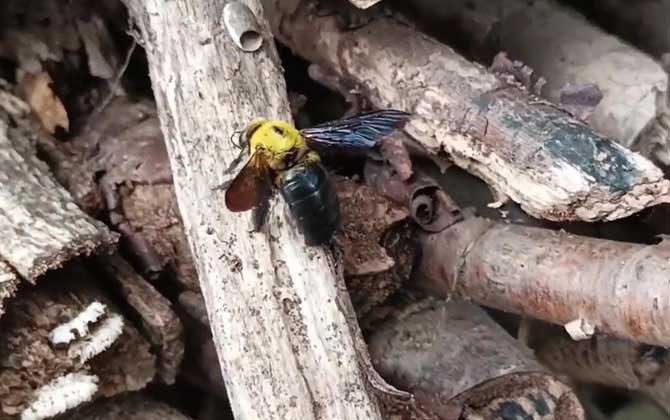Bamboo Worm: A Comprehensive Guide
Introduction
The bamboo worm, scientifically known as the larval stage of Xylocopa nasalis (commonly called bamboo bee or bamboo borer), belongs to the family Apidae within the order Hymenoptera. Widely distributed across southern China, these solitary insects are also referred to as “bamboo maggots” or “bamboo shoot grubs.” They typically inhabit decaying bamboo poles and wooden structures under eaves, exhibiting omnivorous feeding habits primarily focused on pollen and nectar.

Species Profile
The bamboo worm represents the larval form of bamboo bees, classified taxonomically as:
– Kingdom: Animalia
– Phylum: Arthropoda
– Class: Insecta
– Order: Hymenoptera
– Family: Apidae
– Genus: Xylocopa
These insects demonstrate unique nesting behaviors, creating tunnel networks in decomposing bamboo using specialized mandibles. Their life cycle progresses through four stages: egg, larva, pupa, and adult, with larvae serving as crucial decomposers in bamboo ecosystems.

Geographical Distribution
Bamboo bees predominantly inhabit:
– Southern Chinese provinces (Yunnan, Guangxi, Guangdong, Fujian)
– Tropical and subtropical regions of Southeast Asia
– Areas with abundant bamboo forests (elevation range: 200-1,500 meters)
Their nests feature remarkable architecture:
1. Constructed using saliva-bonded bamboo particles
2. Divided into multiple chambers with organic partitions
3. Each cell contains pollen-nectar mixtures (3:1 ratio)
4. Queen bees deposit single eggs in food-rich chambers

Capturing Techniques
1. Nest Blockage Method
– Identify active nests through entrance/exit monitoring
– Seal openings with clay or cloth strips
– Cut infested bamboo sections using saws
– Optimal collection time: Early morning (5-7 AM)
2. Bait Nest Construction
– Prepare attractant mixture:
• Honeysuckle (15g)
• Chrysanthemum (15g)
• Dried bamboo bees (15g)
• Clove (5g) + Fennel (5g)
• White sugar (20% by weight)
– Drill 8-10mm diameter holes in bamboo internodes
– Insert bait mixture and monitor weekly
3. Field Trapping
– Operational guidelines:
• Time: Clear mornings (6-9 AM)
• Equipment: Charcoal stove + aluminum pan
• Procedure:
a. Heat pan to 80°C
b. Release bait aromas gradually
c. Capture swarms with mesh nets
• Safety: Use protective gloves and face nets
Ecological & Economic Significance
While considered pests in bamboo cultivation, bamboo worms hold value as:
– Traditional Chinese medicine components
– High-protein food source (65% protein content)
– Biological indicators of forest health
– Natural pollinators for certain bamboo species
Note: Sustainable harvesting practices are recommended to maintain ecological balance in bamboo ecosystems.